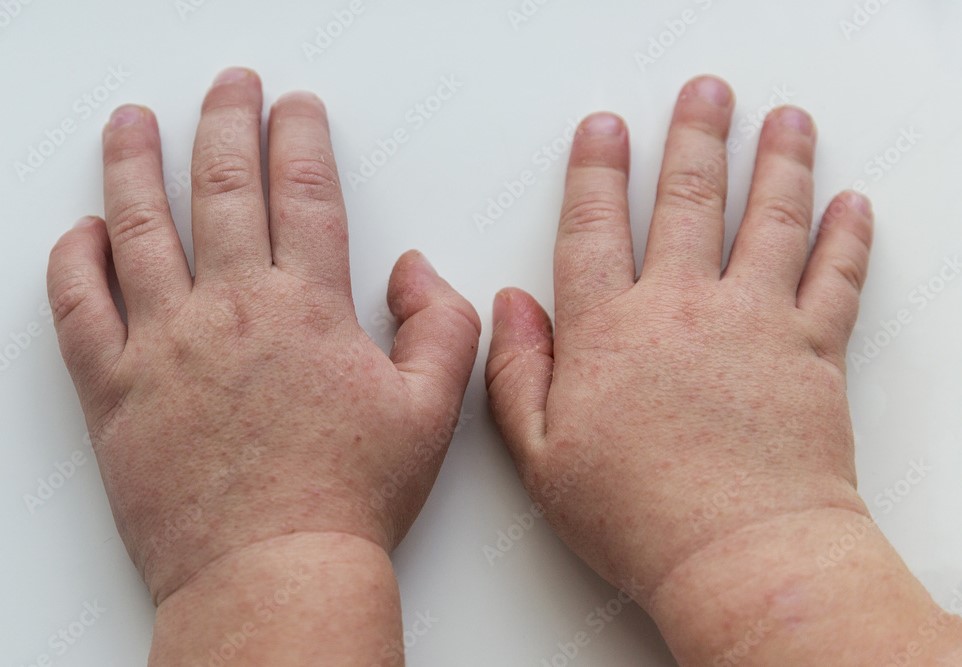Scarlet Fever: Causes, Symptoms, and Treatment

Introduction
Scarlet fever is a contagious bacterial infection that primarily affects children. It is caused by the streptococcus bacteria and is characterized by a distinctive rash, fever, and sore throat. In this article, we will delve into the details of what scarlet fever is, its symptoms, causes, and available treatment options.
What is Scarlet Fever?
Scarlet fever, also known as scarlatina, is an infectious disease caused by the Streptococcus pyogenes bacteria, which is commonly referred to as group A streptococcus. This bacterium also causes strep throat, and in some cases, it can lead to scarlet fever as a complication.
The characteristic feature of scarlet fever is a bright red rash that covers the body. The rash typically begins on the neck and chest before spreading to other parts of the body. The skin affected by the rash feels rough to the touch, resembling the texture of sandpaper. The rash usually lasts for about a week, and as it starts to fade, the affected skin may peel.
Symptoms of Scarlet Fever
Scarlet fever presents with a combination of symptoms that may vary in intensity:
Common Symptoms
-
Sore Throat: One of the initial symptoms is a sore throat, often accompanied by difficulty swallowing.
-
Fever: A high fever, usually above 101°F (38.3°C), is a common sign of scarlet fever.
-
Rash: The hallmark rash, which feels like sandpaper, starts on the upper body and eventually spreads.
Additional Symptoms
-
Headache: Many individuals experience headaches due to the infection.
-
Swollen Lymph Nodes: The lymph nodes in the neck may become swollen and tender to the touch.
-
Reddened Tonsils: The tonsils at the back of the throat may appear red and swollen.
-
White Coating on Tongue: Known as “strawberry tongue,” the tongue may develop a white coating with red spots.
-
Nausea and Vomiting: Some individuals may experience nausea and vomiting.
Causes of Scarlet Fever
Scarlet fever is caused by the Streptococcus pyogenes bacteria. This bacterium produces toxins that lead to the characteristic rash and other symptoms. The bacteria are highly contagious and can spread through:
-
Direct Contact: Coming into contact with nasal or throat fluids of an infected person.
-
Airborne Droplets: Inhaling respiratory droplets expelled when an infected person coughs or sneezes.
Children and individuals with weakened immune systems are particularly vulnerable to scarlet fever.
Diagnosis and Treatment
If you suspect scarlet fever, it’s crucial to seek medical attention promptly. A healthcare provider can diagnose the condition based on symptoms, physical examination, and sometimes a throat swab to test for the presence of the streptococcus bacteria.
Treatment often involves a course of antibiotics, usually penicillin or amoxicillin, to eliminate the bacteria and prevent potential complications. It’s essential to complete the entire prescribed course of antibiotics, even if symptoms improve.
FAQ about Scarlet Fever
Q1: Is scarlet fever the same as strep throat?
No, scarlet fever and strep throat are related but distinct conditions. Both are caused by the same bacteria, but scarlet fever is characterized by the addition of a rash and other symptoms beyond the typical symptoms of strep throat.
Q2: Can adults get scarlet fever, or is it limited to children?
While scarlet fever is more common in children aged 5 to 15, adults can also contract the infection. The risk increases in crowded or close-contact environments.
Q3: How can I prevent the spread of scarlet fever?
To prevent the spread of scarlet fever, it’s important to practice good hygiene. This includes frequently washing hands, avoiding close contact with infected individuals, and covering the mouth and nose when coughing or sneezing.
Conclusion
Scarlet fever is a contagious bacterial infection that primarily affects children but can also impact adults. Recognizing the symptoms and seeking timely medical attention is essential for proper diagnosis and treatment. By understanding the causes, symptoms, and available treatments, we can take proactive steps to prevent the spread of this infection and ensure the well-being of individuals at risk.








